Preface
प्रस्तावनं
How Did Man Arrive on Earth?
EVERY CULTURE ON EARTH HAS PONDERED THE QUESTION, “HOW DID WE GET HERE?” PROFOUND, DIVINE ANSWERS HAVE BEEN FORMULATED THROUGH THE AGES. SEVERAL, DRAWN FROM THE WORLD’S OLDEST AND NEWEST cultures and religions, are summarized or retold in this resource section. Today we seem to be on the verge of completely losing our sense of divine origin and purpose as more and more people accept the verdict of Darwinian science—that we are the chance result of billions of years of evolution from single-celled creatures, to seaborn creatures, to reptiles, birds, mammals, to apes and finally to man. We need not accept at face value this Godless judgment about our origins. Hinduism and other religions hold that there is more to existence than mere physical reality, and that a transcendent intelligence inheres and instructs the development of this universe, including the observed processes of evolution. Here we introduce their poignant citations from legends and ancient texts. Then we present the likelihood of intelligent life elsewhere in our galaxy, exploring the intriguing fact that man did not originate on Earth at all, but came here from other planets. So, before we begin what may be the greatest creation myth of all, let’s view some of the accounts that our international monthly magazine, HINDUISM TODAY, researched in June of 1996. All this serves to lend a complementary view to that found in Lemurian Scrolls, Angelic Prophecies Revealing Human Origins. §
What the World’s Religions Teach§
The Australian Aborigines are likely the oldest tribe on our planet, with a known continuity of cultural history dating back 50,000 years. They speak of the “Dreamtime” of the distant past when the Gods walked on the Earth and created people, sacred places, animals and the ways of human society. They believe a jiva or guruwari, a “seed power,” is deposited in the Earth, “a symbolic footprint of the metaphysical beings whose actions created our world,” states Australian author Robert Lawlor. “We have been here since the time before time began,” explains an Aboriginal elder. “We have come directly out of the Dreamtime of the great Creative Ancestors. We have lived and kept the Earth as it was on the First Day. All other peoples of the world came from us.” §
Hinduism has several creation accounts, of which the central is found in the Ṛig Veda, telling of the Cosmic Man, Purusha, who was sacrificed, as in a yajña, by the Gods to create man. The Purusha is a divine emanation of God, understood in at least one sense as the individuation of consciousness, the personal aspect of Divinity. It is this individuated consciousness that is offered and divided by the Gods to create all of the physical universe, humans, animals and plants. Three-fourths of the Purusha remains “ascended high” and “one fourth took birth again down here,” the hymn explains, meaning that what we see is only one quarter of reality, the remaining being in divine form. Further elaborations of the creation are told in the Purāṇas, Dharma Śāstras and other scriptures. Manu Dharma Śāstra I.11–119, for example, describes the creation of heaven and Earth, of the soul and of individual creatures. Manu, son of the first being, performed tapas, very difficult austerities, to create ten great sages who then created seven other Manus, the progenitors of the human race in each age.§
Man, according to the Vedas, is the result of the Gods’ sacrifice of the divine, primordial form of man. In a concept also found among many other peoples, the parts of this first being became the various living creatures, including man. The Ṛig Veda states, “Thousand-headed is the Man [Purusha] with a thousand eyes, a thousand feet; encompassing the Earth on all sides, he exceeded it by ten fingers’ breadth. That Man, indeed, is this All, what has been and what is to be, the Lord of the immortal spheres which he surpasses by consuming food. Such is the measure of his might, and greater still than this is Man. All beings are a fourth of him, three-fourths are the immortal in heaven. Using the Man as their oblation, the Gods performed the sacrifice. This evolved Man, then first born, they besprinkled on the sacred grass. With him the Gods performed the sacrifice, as did also the heavenly beings and seers. From this sacrifice, fully accomplished, were born the hymns and the melodies; from this were born the sacrificial formulas. When they divided up the Man, his mouth became the brāhmin; his arms became the warrior-prince, his legs the common man who plies his trade. The lowly serf was born from his feet. The Moon was born from his mind; the Sun came into being from his eye; from his mouth came Indra and Agni, while from his breath the Wind was born.”§
The Purāṇas speak of Manu, progenitor of our race. In the Śiva Purāṇa, Brahmā said, “Dharma, the means for achievement of everything, born of me, assumed the form of Manu at my bidding. I created from the different parts of my body innumerable sons. I was then prompted by Śiva present within me and hence I split myself into two; one had the form of a woman and the other half that of a man. That man was Svayambhuva Manu, the greatest of the means of creation. The woman was Satarupa, a yoginī, an ascetic woman. Together they created beings. Their sons and progeny are spread over the world both mobile and immobile.”§
Sikhism follows Hindu traditions of origins. Buddha taught that this world will come to an end, but that in time a new world will evolve again. Certain karmas will cause souls to again seek life in the body. Others will follow and become more and more attached to the body, developing passion, selfishness and other evils. The Buddhist scripture Saddharma Pundarika mentions that there are so many worlds beyond this one that no one “should be able to imagine, weigh, count or determine their number.” The Jains hold that the world, souls and time are uncreated, unbeginning and unending. The world exists through its own being and is divided into heaven, earth and hell.§
Abrahamic Religions: The Hebrews, Christians and Muslims all hold more or less to the creation story given in the Bible’s first chapter. “In the beginning God created the heaven and the Earth. And the Earth was without form, and void; and darkness was upon the face of the deep. And the Spirit of God moved upon the face of the waters. And God said, ‘Let there be light:’ and there was light. And God saw the light, that it was good: and God divided the light from the darkness. And God said, ‘Let there be a firmament in the midst of the waters, and let it divide the waters from the waters.…’ And God said, ‘Let the Earth bring forth the living creature after his kind, cattle, and creeping thing, and beast of the Earth after his kind:’ and it was so. And God said, ‘Let us make man in our image, after our likeness: and let them have dominion over the fish of the sea, and over the fowl of the air, and over the cattle, and over all the Earth, and over every creeping thing that creepeth upon the Earth.’ So God created man in His own image, in the image of God created He him; male and female created He them. And God blessed them, and God said unto them, ‘Be fruitful, and multiply, and replenish the Earth, and subdue it: and have dominion over the fish of the sea, and over the fowl of the air, and over every living thing that moveth upon the Earth.’ ” §
Christians and Jews believe in the making of man by God on the sixth day of creation (some 4,000 years ago) out of clay and in His own image, as told in the Book of Genesis. The Muslims believe, similarly, that Allah created Adam, the first man in Paradise, then the first woman, Hawa (Eve). There they lived a perfect life in a perfect universe, far vaster than ours. They were cast to Earth when they committed the first act of disobedience to God, after a jealous Satan tricked them. Their children are the ancestors of mankind. The Zoroastrian religion of Persia also holds to the creation story of Adam and Eve. There are mystical traditions within the Abrahamic religions—Christianity, Islam and Judaism—which go beyond Genesis. For example, Sufi master Shaykh Muhammad Nazim al-Haqqani taught, “Do you think there was only one Adam? No. There was not one Adam. In fact, there have been 124,000 Adams. Allah is not stingy; He is generous. His creation is endless.” Sufi mystics also hold that there are many inhabited worlds in the universe. The Jewish Kabbala tradition teaches of man’s descent from the highest spiritual world through a series of planes ending with his incarnation in a physical body.§
The Shinto teaching is that the Japanese people are descendants of the Gods Izanagi and Izanami, who were ordered to “make, consolidate and give birth to this drifting land [of Japan].” This they did and then produced the many Gods, fire, water and men. Among the Gods, the most important was Amaterasu, the Sun God, whose descendent was Jimmu, the first emperor of Japan.§
Theosophy believes in countless universes, each the home of numerous solar systems with planets where beings are evolving. Human history is recounted in terms of seven succeeding “root races.” The first, descended from residents of the moon, dwelt on a continent named the imperishable Sacred Land. The second, known as the Hyperborean, inhabited a vast territory in the vicinity of the North Pole. Since neither of those races had physical bodies, they reproduced by spiritual means. The third root race lived and died in Lemuria; the fourth in Atlantis—both now at the ocean bottom. The fifth and present root race is the Aryan; the sixth and seventh have yet to appear. When they do, humanity will have run its course on Earth and will move to another planet to begin the cycle again.§
American Indians: The Omaha tribe live in the American Midwest. Their stories emphasize the oneness of man and nature. “At the beginning all things were in the mind of Wakonda. All creatures, including man, were spirits. They moved about in space between the Earth and the stars (the heavens). They were seeking a place where they could come into bodily existence. They ascended to the sun, but the sun was not fitted for their abode. They moved on to the moon and found that it also was not good for their home. Then they descended to the Earth. They saw it was covered with water. They floated through the air to the North, the East, the South and the West and found no dry land. They were sorely grieved. Suddenly from the midst of the water uprose a great rock. It burst into flames and the waters floated into the air in clouds. Dry land appeared; the grasses and the trees grew. The hosts of the spirits descended and became flesh and blood. They fed on the seeds of the grasses and the fruits of the trees, and the land vibrated with their expressions of joy and gratitude to Wakonda, the maker of all things.”§
Mayan: The Popol Vuh is nearly the only surviving text of the Central American Mayans. It tells their story of creation. “Admirable is the account of the time in which it came to pass that all was formed in heaven and upon Earth as was spoken by the Creator and Maker, the Mother, the Father of life and of all existence, that One by whom all move and breathe, Father and Sustainer of the peace of peoples, by Whose wisdom was premeditated the excellence of all that doth exist in the heavens, upon the Earth, in lake and sea. Lo, all was in suspense, all was calm and silent; all was motionless, all was quiet, and wide was the immensity of the skies. Lo, the first word and the first discourse. There was not yet a man, not an animal; only the sky existed. The face of the Earth was not yet to be seen; only the peaceful sea and the expanse of the heavens. Alone was the Creator, the Maker, Tepeu, the Lord, and Gucumatz, the Plumed Serpent, those who engender, those who give being, alone upon the waters like a growing light. They spoke, ’Let it be thus done. Let the waters retire and cease to obstruct, to the end that Earth exist here, that it harden itself and show its surface, to the end that it be sown, and that the light of day shine in the heavens and upon the Earth; for we shall receive neither glory nor honor from all that we have created and formed until human beings exist, endowed with sentience.’ ”§
The Mayans and the ancient Babylonians taught that the Gods created man to honor them. “I will create a savage; Man shall be his name,” declared the victorious God Marduk in Enuma Elish. “Verily, a savage man I will create. He shall be charged with the service of the Gods, that they might be at ease! Let one of the [lesser] Gods be handed over. He alone shall perish that mankind may be fashioned.”§
Chinese: The Chinese story of the original man, Pangu, parallels that of Hindu creation. “In the beginning was a huge egg containing chaos, a mixture of yin-yang—female-male, passive-active, cold-heat, dark-light and wet-dry. Within this yin-yang was Pangu, that which was not yet anything but which broke forth from the egg as the giant who separated chaos into the many opposites, including Earth and sky. Each day for 18,000 years Pangu grew ten feet between the sky, which was raised ten feet and the Earth, which grew by ten feet. So it is that heaven and Earth are now separated by 30,000 miles. Pangu was covered with hair; horns sprang from his head and tusks from his mouth. With a great chisel and a huge mallet, he carved out the mountains, valleys, rivers and oceans. During his 18,000 years, he also made the sun, moon and stars. He created all knowledge. All was suffused by the great primal principles of the original chaos, yin and yang. When Pangu finally died, his skull became the top of the sky, his breath the wind, his voice thunder, his legs and arms the four directions, his flesh the soil, his blood the rivers and so forth. The people say that the fleas in his hair became human beings. Everything that is is Pangu, and everything that Pangu is is yin-yang. With Pangu’s death a vacuum was created, and within this vacuum pain and sin were able to flourish.”§
Africa: The Bantu people live in Equatorial and Southern Africa. Their story includes the introduction of death. “In the beginning there was only one man on Earth, and he was called Kintu; the daughter of the sky saw him, fell in love with him and persuaded her father to make him her husband. Kintu was summoned to the sky, and such were the magic powers of the daughter of the sky that he emerged successful from the ordeals imposed on him by the great God. He then returned to Earth with his divine companion, who brought to him as her dowry domestic animals and useful plants. As he bade them farewell, the great God advised the newlyweds not to return to the sky. He feared that they might have incurred the anger of one of his sons, Death, who had not been informed of the marriage, since he had been absent at the time. On his way to Earth, Kintu realized he had forgotten to bring grain. In spite of his wife’s supplications, he went back up to the sky. By then the God of Death was there. He followed in the man’s footsteps as he returned to Earth, hid near his home and killed all the children who were eventually born to Kintu and the daughter of the sky.” The African Dogon tribe teaches that the primal Cosmic Egg was shaken by seven huge stirrings of the universe. It divided into two birth sacs, each containing a set of androgynous twins who were fathered by the Supreme Being, Amma. From one set of twins was born the Earth, from the other, mankind.§
Ancient Egypt: This creation story is recorded in The Book of Overthrowing Apophis, an ancient text in hieroglyphics. “The Lord of All, after having come into being, says: I am he who came into being as Khepri, the Becoming One. When I came into being, the beings came into being, all the beings came into being after I became. Numerous are those who became, who came out of my mouth, before heaven ever existed, nor Earth came into being, nor the worms, nor snakes were created in this place. I, being in weariness, was bound to them in the Watery Abyss. I found no place to stand. I thought in my heart, I planned in myself, I made all forms being alone, before I ejected Shu, before I spat out Tefnut before any other who was in me had become. Then I planned in my own heart, and many forms of beings came into being as forms of children, as forms of their children. I ejected Shu, I spat out Tefnut. After having become one God, there were now three Gods in me. When I came into being in this land, Shu and Tefnut jubilated in the Watery Abyss in which they were. I wept over them, and men came into being out of the tears which came out of my eyes. I created all that came into being with them. Shu and Tefnut produced Geb and Nut; Geb and Nut produced out of a single body Osiris, Horus the Eyeless one, Seth, Isis, and Nephthys, one after the other among them. Their children are numerous in this land.”§
Signs of a Common Heritage: In examining the creation stories of the world’s faiths, one thing strikes a Hindu: nearly every account has some parallel within Hindu mythology. Anthropologists explain all these parallels in a psychological fashion—water symbolizes the womb, etc. But perhaps all cultures are harkening back to the experiences of a common ancestry. The American Indians of California, for example, tell of how God sent an animal down through the waters to bring up the Earth, in the same way that the Boar incarnation of Lord Vishnu rescued the Earth from beneath the waters. The Chinese Pangu is amazingly akin to the sacrificed original man in the Purusha Śūkta. In many cultures, man was originally immortal, and only at a certain time did he start to die—just as Yama in Hinduism was the first man to die, and then became the Lord of Death. Another common element is the breath of God being infused into man, bringing him to life. Below are some of mankind’s reflections about how we came to be here.§
Did We Come from the Sky? The authoritative Larousse World Mythology book states, “There is an almost universal belief in a visit by the first men to the sky, and consequently in the existence of a path between the Earth and the world above that was ultimately destroyed by human wrongdoing.” There are common elements in the creation stories which indicate we had a different kind of existence before living in these physical bodies. One example is androgyny; the original people in the creation stories are often both male and female. Another is the absolute harmony of existence in an earlier time when people lived in peace and freely communicated with the animals and plants. A third is the initial absence of death, a fact of life which comes later, as previously described. §
Hindu scriptures often speak of the many lokas, or planes of existence, and dvipas, or islands. They talk of beings coming from other lokas to this loka, possibly even of spaceships in which they could travel. These lokas, however, are more commonly interpreted as other dimensions of existence rather than physical planets. §
His Divine Grace A.C. Bhaktivedanta Swami Prabhupada, founder of ISKCON, addressed this question in his commentary on Śrīmād Bhāgavatam: “According to Vedic understanding, the entire universe is regarded as an ocean of space. In that ocean there are innumerable planets, and each planet is called a dvipa, or island. The various planets are divided into fourteen lokas. As Priyavrata drove his chariot behind the sun, he created seven different types of oceans and planetary systems, known as Bhūloka.” Srila Prabhupada also stated that according to the Vedic tradition there are 400,000 species in the universe with humanlike form, many of them advanced beyond us. Other parts of Hindu scripture refer to travel to other worlds. The Ṛig Veda hymns on death speak of man’s soul traveling to the sun and the moon, then returning to Earth.§
Certainly the most dramatic example of a people who believe they came from another planet is the Tana Toraja tribe in the Celebes Highlands of Java, Indonesia. They declare their ancestors came from the Pleiades in spaceships. In fact, they continue to build their homes to look like those ships today. This tribe had no contact with the outside world until this century, and had no way of knowing that space travel was even possible. §
Creation According to Modern Science §
The following descriptions are assembled from the statements of several eminent scientists: The universe was created ex nihilo [out of nothing]. At a particular instant roughly fifteen billion years ago, all the matter and energy we can observe, concentrated in a region smaller than a dime, began to expand and cool at an incredibly rapid rate. This knowledge comes from decades of innovative experiments and theories. This theory is known as the Big Bang cosmology. Yet many fundamental mysteries remain [such as] what was the universe like before it was expanding? Life developed spontaneously on Earth and slowly developed into more and more complex organisms through a process of natural selection. When the environment changes, individuals bearing traits that provide the best adaptation to the new environment meet with the greatest reproductive success. Science generally holds that without supernatural intervention, spontaneous interaction of the relatively simple molecules dissolved in the lakes or oceans of the prebiotic world yielded life’s last common ancestor. Man has evolved by natural selection from earlier species. Our most recent ancestors are the primates. Evolution does not mean progress defined to render the appearance of something like human consciousness either virtually inevitable or at least predictable. As stated by noted astrophysicist Stephen Hawking, “We must come to entertain the strong possibility that Homo sapiens is but a tiny, late-arising twig on life’s enormously arborescent bush—a small bud that would almost surely not appear a second time if we could replant the bush from seed and let it grow again.”§
The Green Bank Equation: The scientists who developed the Green Bank equation on page xxvi make a convincing case for the existence of intelligent life elsewhere in our universe. Sentient life throughout the cosmos provokes the question, “Could man have originated elsewhere and migrated here, either physically or spiritually?” Most religions that address this question speak of the migration as purely spiritual, but at least one claims the journey was physical.§
On a purely materialistic basis, scientists have made the case for at least the very first elementary life coming to Earth from outer space, probably arriving frozen solid inside a meteor. This hypothesis is called panspermia, meaning the migration of living spores from planet to planet throughout space. There is a class of meteors called carbonaceous chondrites with organic compounds in them and microscopic particles resembling, but not identical to, fossil algae of the kind that live in water.§
There is another school among the scientists which includes Nobel Laureate Francis Crick, co-discoverer of the DNA molecule. Crick advocated a theory of “directed panspermia”—the possibility that an older civilization sent a mission to start life on our newly evolving planet. A single capsule of several elementary organisms would, he claimed, suffice to bring life to Earth. “This might suggest,” Crick said, “that we have cousins on planets which are not too distant.” In modern times the concept of coming from other planets is advocated by the Theosophists. The first two of their postulated seven root races had nonphysical bodies. They teach that when the last root race has appeared, humanity will have run its course of evolution on Earth and will move to another planet to begin the cycle again. §
The Green Bank equation is a way to statistically guess the possible number of intelligent civilizations in our galaxy, the Milky Way. It is not the result of a UFO conference, but rather sober calculations made when US scientists first set out to detect life elsewhere in the galaxy by listening for coded radio signals from them. The explanation of the equation on the next page is from the book Cosmos by my friend the late astrophysicist Dr. Carl Sagan. We were together in 1990 at the Moscow Global Forum and there spoke of ultimate matters from very different points of view. §
Who could we talk to “out there” with our present level of technology? The answer, according to the Encyclopedia Britannica, is that with our present most powerful radio telescope we could send and receive intelligible signals “a rather astonishing 1,000 light years. Within that range are over ten million stars.” The Green Bank equation’s “bottom line” is that within our galaxy there are plausibly ten million advanced civilizations. That, of course, doesn’t mean they are all close by. If equally distributed, the nearest might be several hundred light-years away—which is a really long way. Consider also that this formula only addresses one galaxy, ours. The total number of galaxies in the universe is estimated at 100 billion. Ten million civilizations per galaxy computes to a truly astronomical figure. We are very probably not alone in this vast universe.§
Conclusion§
We can now see that there is hope for a more secure future when we put together in our inner mind all the information that we have gathered on these pages. The wise look to the past to know the future. We do hope that by looking at our beginnings we have helped in some way the peoples of the world to forge a fulfilling future. Maybe, just maybe, all the answers are not to be found in our intellects. Some may exist in the old creation stories, or be projected to us from futurists within inner and outer space.§
 | The Green Bank Equation: N = n fP nE fL fI fC L How Science concludes there is intelligent life elsewhere in our galaxy. n represents the number of stars in our Milky Way galaxy, estimated at 400 billion. |
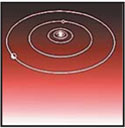 | fP is the likely number of planets. One in three stars may have a solar system, averaging perhaps 10 planets each, for a total of 1,300 billion planets. Since 1995, more than 6 nearby stars were confirmed to have planets around them. |
 | nE is the likely number of planets that can support life. Since life exists on Earth in a wide range of temperature and environment, this is guessed at two per system. That gives a total of 300 billion planets on which life might evolve. |
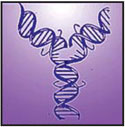 | fL is the likely fraction of such planets which might actually develop some form of life. It was estimated by Carl Sagan (based on the range of scientific opinion) at one in three. That means there might be 100 billion inhabited worlds. |
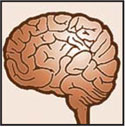 | fI is the likely number of planets with intelligent life developing. Such a development might be rare, or it might be inevitable. Sagan uses the conservative figure of one in ten. We could have in our galaxy an estimated ten billion worlds with intelligent life. |
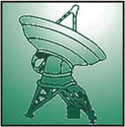 | fC is the fraction of those planets with intelligent life which develop a technological civilization capable of interstellar communication. This is estimated at one in ten, for a total of one billion technically advanced civilizations in the galaxy. |
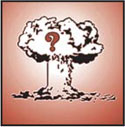 | L is the final factor. Does an advanced civilization destroy itself, as we on Earth seem inclined to do, or does it endure for millions of years? If even one percent survive, states Sagan, “The number of such advanced living civilizations is in the millions.” |